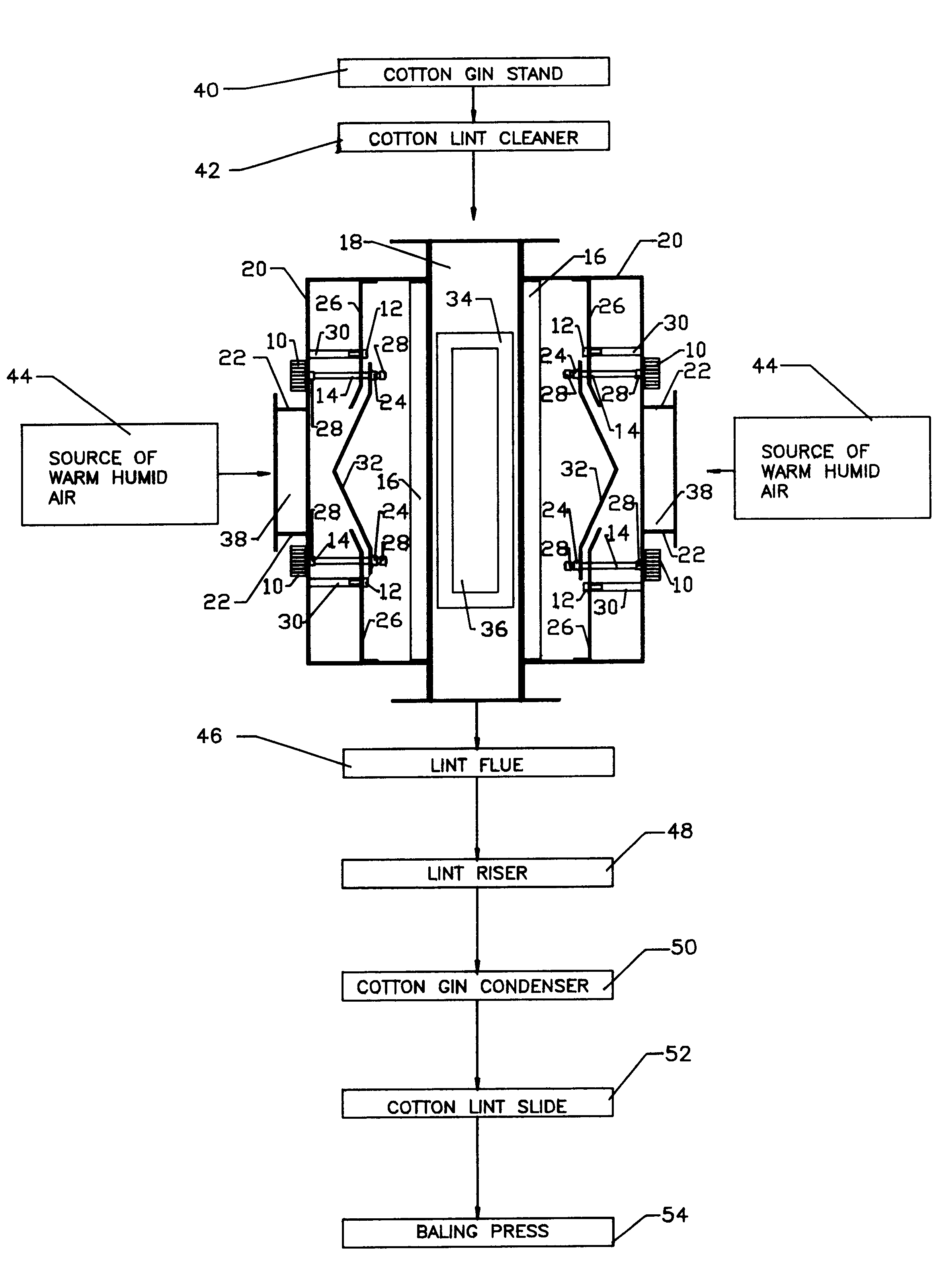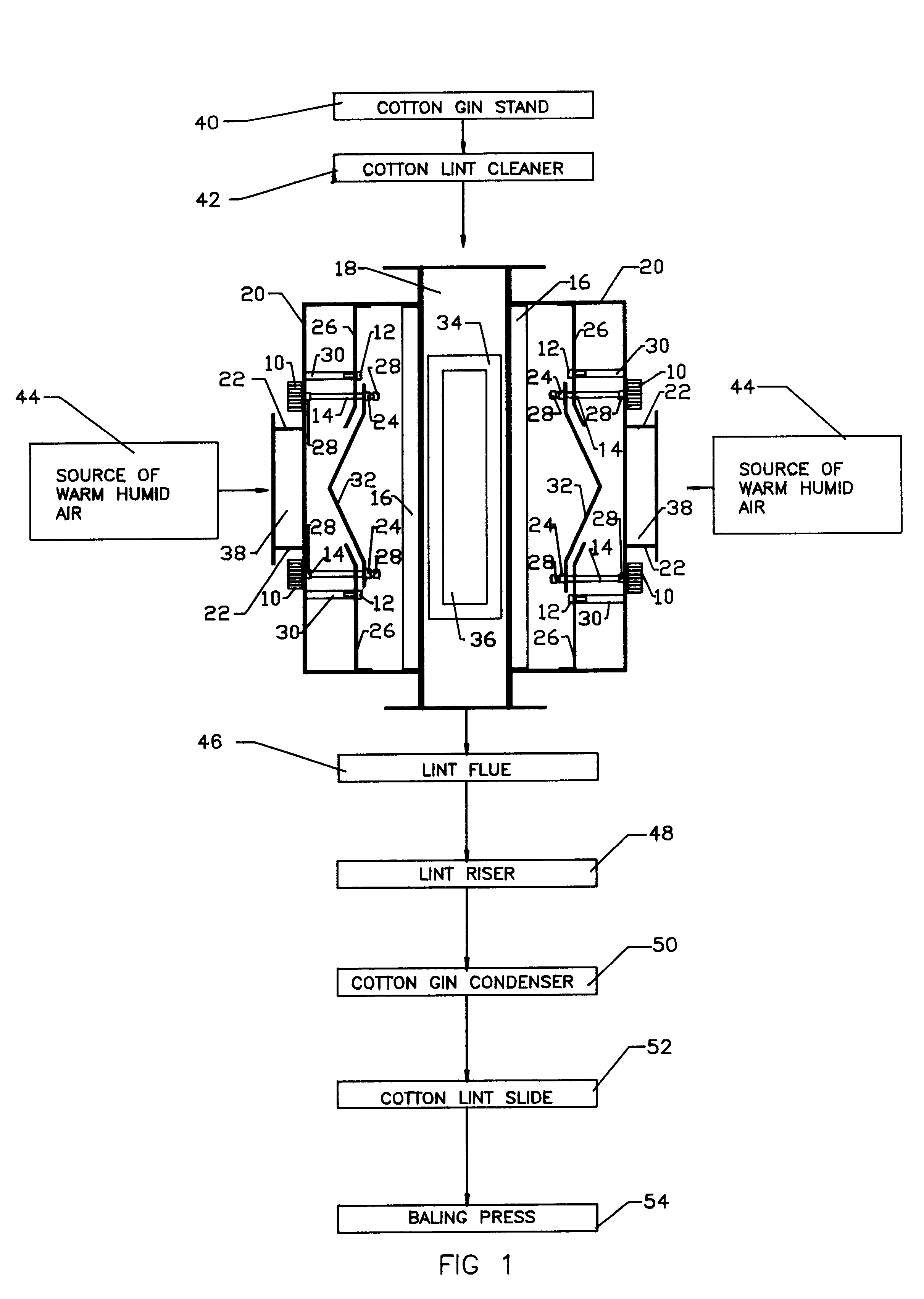Fiber moisture cell for humidifying cotton and method
a fiber moisture cell and cotton technology, applied in the field of fiber moisture cell for humidifying cotton, can solve the problems of requiring 66% more ram pressure to press a dry cotton bale, requiring additional labor to press, and affecting the quality of cotton, so as to save natural resources, energy-efficient, and cost less.
- Summary
- Abstract
- Description
- Claims
- Application Information
AI Technical Summary
Benefits of technology
Problems solved by technology
Method used
Image
Examples
Embodiment Construction
)
Referring first, more particularly, to FIG. 1 of the wings within a cotton gin plant, there may be seen a layout equipment and travel of lint cotton in a cotton gin along with a fiber moisture cell.
Other equipment associated with the fiber moisture cell will be a source of warm humid air 44. The warm humid air source 44 must deliver a set quantity of air at the desired temperature and humidity. Units of this nature are well known to the art and therefore not further described.
The cotton gin stand 40 will supply the lint cleaner 42 with lint cotton. The gin stand 40 is a well known cotton gin structure that separates the lint from the seed. The lint cleaner 42 is a well known machine that cleans trash from lint cotton.
The lint cleaner 42 feeds cotton fiber into a lint flue 46, the lint flue feeds cotton into the lint riser 48, the lint riser feeds cotton into the battery condenser 50, the battery condenser feeds cotton onto the lint slide 52 which feeds cotton into the baling press ...
PUM
| Property | Measurement | Unit |
|---|---|---|
| Angle | aaaaa | aaaaa |
| Hygroscopicity | aaaaa | aaaaa |
| Pressure | aaaaa | aaaaa |
Abstract
Description
Claims
Application Information
 Login to View More
Login to View More - R&D
- Intellectual Property
- Life Sciences
- Materials
- Tech Scout
- Unparalleled Data Quality
- Higher Quality Content
- 60% Fewer Hallucinations
Browse by: Latest US Patents, China's latest patents, Technical Efficacy Thesaurus, Application Domain, Technology Topic, Popular Technical Reports.
© 2025 PatSnap. All rights reserved.Legal|Privacy policy|Modern Slavery Act Transparency Statement|Sitemap|About US| Contact US: help@patsnap.com



